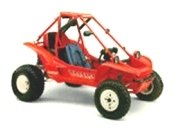
PilotOdyssey.com

 |
PilotOdyssey.com |
|
| It is currently Mon May 19, 2025 7:45 am |
|
All times are UTC - 5 hours [ DST ] |
 
|
Page 2 of 6 |
[ 128 posts ] | Go to page Previous 1, 2, 3, 4, 5, 6 Next |
|
| Author | Message | |||
|---|---|---|---|---|
| canadian oddy |
|
|||
|
Joined: Tue Jan 17, 2012 3:19 am Posts: 7910 Location: Hope, B.C Canada |
|
|||
| Top | |
|||
| TerryH |
|
|||
|
Joined: Sun Jan 13, 2019 11:15 am Posts: 435 Location: Springdale, AR |
|
|||
| Top | |
|||
| adnoh |
|
|||
|
Joined: Fri Jan 12, 2007 2:17 pm Posts: 3636 Location: Wichita ks |
|
|||
| Top | |
|||
| adnoh |
|
|||||
|
Joined: Fri Jan 12, 2007 2:17 pm Posts: 3636 Location: Wichita ks |
|
|||||
| Top | |
|||||
| canadian oddy |
|
|||
|
Joined: Tue Jan 17, 2012 3:19 am Posts: 7910 Location: Hope, B.C Canada |
|
|||
| Top | |
|||
| adnoh |
|
|||||
|
Joined: Fri Jan 12, 2007 2:17 pm Posts: 3636 Location: Wichita ks |
|
|||||
| Top | |
|||||
| TerryH |
|
|||
|
Joined: Sun Jan 13, 2019 11:15 am Posts: 435 Location: Springdale, AR |
|
|||
| Top | |
|||
| canadian oddy |
|
||||||||||
|
Joined: Tue Jan 17, 2012 3:19 am Posts: 7910 Location: Hope, B.C Canada |
|
||||||||||
| Top | |
||||||||||
| canadian oddy |
|
|||||||||
|
Joined: Tue Jan 17, 2012 3:19 am Posts: 7910 Location: Hope, B.C Canada |
|
|||||||||
| Top | |
|||||||||
| canadian oddy |
|
|||||||
|
Joined: Tue Jan 17, 2012 3:19 am Posts: 7910 Location: Hope, B.C Canada |
|
|||||||
| Top | |
|||||||
| canadian oddy |
|
|||
|
Joined: Tue Jan 17, 2012 3:19 am Posts: 7910 Location: Hope, B.C Canada |
|
|||
| Top | |
|||
| canadian oddy |
|
|||
|
Joined: Tue Jan 17, 2012 3:19 am Posts: 7910 Location: Hope, B.C Canada |
|
|||
| Top | |
|||
| TerryH |
|
|||
|
Joined: Sun Jan 13, 2019 11:15 am Posts: 435 Location: Springdale, AR |
|
|||
| Top | |
|||
| rmesser |
|
|||
|
Joined: Mon Oct 25, 2004 10:02 am Posts: 2868 Location: East Peoria IL |
|
|||
| Top | |
|||
| canadian oddy |
|
|||
|
Joined: Tue Jan 17, 2012 3:19 am Posts: 7910 Location: Hope, B.C Canada |
|
|||
| Top | |
|||
| canadian oddy |
|
|||
|
Joined: Tue Jan 17, 2012 3:19 am Posts: 7910 Location: Hope, B.C Canada |
|
|||
| Top | |
|||
| TerryH |
|
|
|
Joined: Sun Jan 13, 2019 11:15 am Posts: 435 Location: Springdale, AR |
||
| Top | |
|
| canadian oddy |
|
|||
|
Joined: Tue Jan 17, 2012 3:19 am Posts: 7910 Location: Hope, B.C Canada |
|
|||
| Top | |
|||
| rmesser |
|
|||
|
Joined: Mon Oct 25, 2004 10:02 am Posts: 2868 Location: East Peoria IL |
|
|||
| Top | |
|||
| rmesser |
|
|||
|
Joined: Mon Oct 25, 2004 10:02 am Posts: 2868 Location: East Peoria IL |
|
|||
| Top | |
|||
| TerryH |
|
|||
|
Joined: Sun Jan 13, 2019 11:15 am Posts: 435 Location: Springdale, AR |
|
|||
| Top | |
|||
| canadian oddy |
|
|||
|
Joined: Tue Jan 17, 2012 3:19 am Posts: 7910 Location: Hope, B.C Canada |
|
|||
| Top | |
|||
| TerryH |
|
|||
|
Joined: Sun Jan 13, 2019 11:15 am Posts: 435 Location: Springdale, AR |
|
|||
| Top | |
|||
| canadian oddy |
|
|||
|
Joined: Tue Jan 17, 2012 3:19 am Posts: 7910 Location: Hope, B.C Canada |
|
|||
| Top | |
|||
| rmesser |
|
|||
|
Joined: Mon Oct 25, 2004 10:02 am Posts: 2868 Location: East Peoria IL |
|
|||
| Top | |
|||
 
|
Page 2 of 6 |
[ 128 posts ] | Go to page Previous 1, 2, 3, 4, 5, 6 Next |
|
All times are UTC - 5 hours [ DST ] |
Who is online |
Registered users: Baidu [Spider], Google [Bot] |
| You cannot post new topics in this forum You cannot reply to topics in this forum You cannot edit your posts in this forum You cannot delete your posts in this forum You cannot post attachments in this forum |